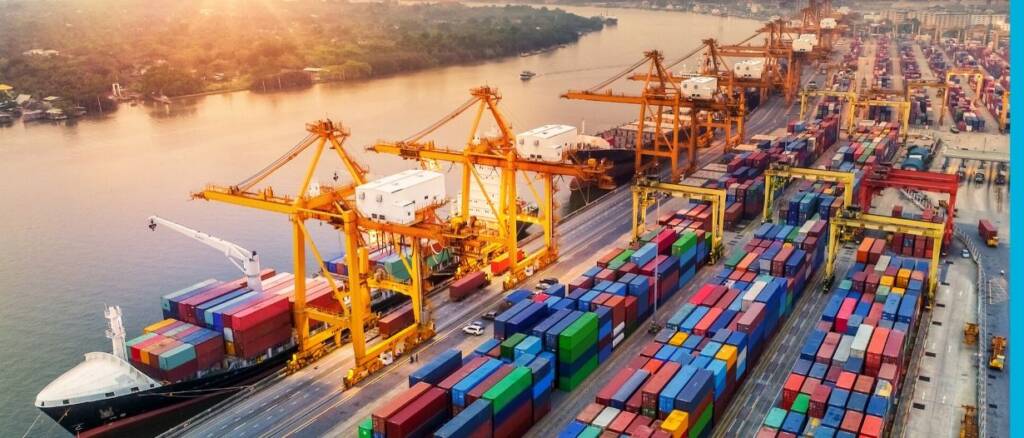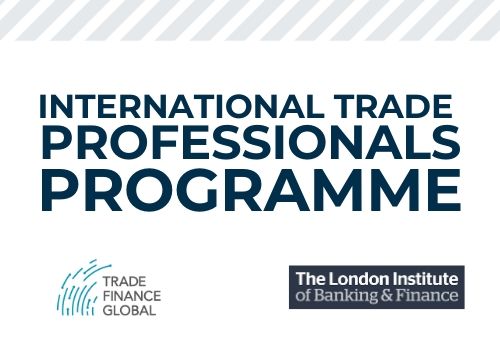The Buyer’s Request for Quotation and Seller’s Quotation – a science instead of a kabuki dance
Science begins by asking the right question(s) leading toward an unknown result. Art, on the other hand, makes its way toward a result already known to the artist in his mind’s eye. The Request for Quotation and Quotation can, and should be, the foundation for a trade transaction. The transaction documents that flow from their pairing becomes the foundation for the many documents that lead to the exchange of money and title transfer of goods. The right questions generally fall into three categories; transaction, logistic and trade finance. These are the questions all RFQs and QTOs ask either explicitly or implicitly. The more explicit the questions and the more exact the answers, lead to more successful transactions with few if any discrepancies and/or misunderstandings.

The RFQ and QTO Transaction Questions
The transaction questions are the ones that define who the buyer and seller are, what the seller wants to buy, and how he wants to pay for it. The purpose of the Request for Quotation is to generate a Quotation from a seller that matches or comes close to what the buyer wants. Most times in a new relationship the buyer and seller do not have all the answers on hand; but it is essential they know and put forward the questions and test for the answers.
The buyer and seller’s name and address
Companies have different names and addresses for different purposes; mailing address, registration address, warehouse address, bank account name, branch address, etc, etc. The names on the RFQ and QTO should reflect the name and address of their company that is associated with its bank relationship. This will become important later when the seller invoices the buyer for goods and services and their respective banks need to SWIFT each other.
Description of the goods and services
The RFQ and QTO should have two descriptions of the goods and services it wishes to purchase; a general description and a more detailed description with quantities, unit prices and specifications. The general description is used for the “Description of Goods and Services”. The general needs to be as generic a description of the goods as possible and contain (ideally) no unit prices or quantities (reference UCP 600 Article 4.b). The information contained in the general description will be used to examine the negotiable documents and complete the transport document. The less complexity the fewer discrepancies. Long complex descriptions often will not fit into the space allowed in the bill of lading template forcing discrepancies. The more detailed description containing specifications can be conveyed in the buyer’s Purchase Order. Purchase Orders are not required to be part of a negotiable document set and will not be examined. No examination; no discrepancies; less cost; and less problems.
Price per Unit and Currency
Price is what is being requested in a RFQ and is unknown by the buyer; however, the quantity and/or lot sizes should be specified. Normally, larger quantities and lot sizes provide for smaller unit prices. The bait and switch game should be avoided. How much for 1000 units? and then issue a purchase order for 100. This is not a good way to develop trust and is considered to be a “sharp practice”.

Packaging
Packaging in bulk, container or oversize deck cargo. Bulk can further be defined into the size of ship, loose, or bag size.
Incoterms 2020
The Incoterm determines whether the buyer or the seller is going to pay for the freight and insurance from the shipping point to the delivery point. EXW is the least cost to the seller since the buyer is responsible for picking up the goods at the factory door. DDP is the most costly to the seller since he pays for freight, insurance, duties and carriage all the way from his warehouse to the buyers warehouse (or point selected). Which Incoterm to use should be selected early in the process since freight rates fluctuate.
EXW – Ex Works: insert named place of delivery
FCA – Free Carrier: insert named place of delivery
CPT – Carriage Paid To: insert named place of destination
CIP – Carriage and Insurance Paid To: insert named place of destination
DAP – Delivered at Place: insert named place of destination
DPU – Delivered at Place Unloaded: insert named place of destination
DDP – Delivered Duty Paid: insert named place of destination
FAS – Free Alongside Ship: insert named port of shipment
FOB – Free on Board: insert named port of shipment
CFR – Cost and Freight: insert named port of destination
CIF – Cost, Insurance and Freight: insert named port of destination
Changes from 2010: DAT is now DPU; and FCA now allows for Bills of Lading to be issued after loading
ARTICLE: Why the simple language of Incoterms® 2020 rules will grow trade in emerging markets

The RFQ and QTO Logistics Questions
The buyer or seller’s selected freight forwarder should be brought into the process as soon as possible. The Incoterm determines whether the buyer or seller selects the company to handle the logistics. Freight forwarders are unsung heroes in international trade. They provide many functions besides providing freight rates and recommending a carrier. They also advise which documents and/or certifications are required to import into the country of destination, arrange for container drop off and pickup, and usually broker customs charges to name a few.
- Port or Airport or Place of Embarkation?
- Port or Airport or Place of Debarkation?
- Mode of Transportation – Air Freight, Ocean or seaway, Rail, Truck, or Courier?
- Transport Documents Required (minimum)
- Evidence of Movement – Transportation document; bill of lading or air waybill
- Evidence of Value – Invoice
- Evidence of Content – Packing list
- Evidence of Quality – Beneficiary or third party inspection certificate
- Optional: Certificate of Origin, Psynosanitary, Fumigation, SGS, Export License.
- Bill of Lading Consignee – Who is the owner of the goods during and after transport?
- Bill of Lading Notify Party – Who is to be notified upon arrival?
- Partial Shipments – Are there going to be one or more shipments?
- Transshipment – Is there going to be more than one mode of transport involved in the final destination specified by the Incoterm?
- Delivery Schedule – requested?
- Outbound Freight Forwarding Company – With contact details?
- Inbound Freight Forwarding Company – With contact details?

The RFQ and QTO Trade Finance Questions
Whichever of the three basic methods is selected, trade finance is involved. Traditionally, trade finance deals with bank credits and collections and not with open account transactions. This is a miss conception and a big (very big) mistake. Every buyer and seller needs to understand the questions that will need answers. The transaction, logistic and trade finance questions are inherently linked one to another. This is part of the fun of structuring international trade transactions and is also the bane of importers and exporters. The universal guidelines for all trade transactions are the UCP 600[1] and URC 522[2] .
- Which Transaction Payment Method (there are only three) Credit, Collection or Open Account is going to be used?
- Credit – 110% of the transaction value is required to be held by a third party and are available with the escrow services company when documents are presented.
- Collection – Transaction funds are available with the applicant/buyer when documents are presented.
- Open Account – Same as a collection except paid after delivery, not when documents are presented.
- Applicant’s Name and Address – Is the “applicant” the same as the “buyer”?
- Beneficiary’s Name and Address – Is the “beneficiary” the same as the “seller”?
- Amount and Currency – The value of the trade finance funds that are available to support the purchase order. The sum of: a. cost of goods sold; b. freight and insurance; c. terminal fees; d. customs and VAT; e. carriage to and from the port or airport; and f. bank or trade finance service fees.
- Percentage Amount Tolerance – Full shipments are considered to be plus or minus 5% of the total value or unit quantity of the goods and services unless otherwise expressed.
- Available with – Transaction funds are either with the applicant or with an escrow third party (often a bank).
- Escrow Company – For Documentary Trade Credits, SMP Partners Escrow Services & Due Diligence.
- Drafts Payable At – At Sight or up to 180 days days after shipping date.
- Red Clause Required – Amount, if any, funds for deposit to be disbursed to the seller before shipment of the goods and services.
- Presentation Period – Number of days allowed between the shipping date and the Negotiable Document Set presentation for payment. Usually 21 days.
- Description of Goods and Services – General description of the goods and services for trade finance and transportation document purposes.
- Original Electronic Records to be Sent To – The email address of the issuing entity of the credit or collection.
- Paper Originals to be Sent To – Paper originals are sent to the buyer after payment since they now belong to him.
- Documents Required for Negotiation – All of the documents required for payment agreed to between the parties.
Note 1: The International Chamber of Commerce Uniform Customs and Practice for Documentary Credits (UCP 600) and Supplement for Electronic Presentation (eUCP v2.0), in effect 1 July 2019.
Note 2: The International Chamber of Commerce Uniform Rules for Collections (URC 522) and Supplement for Electronic Presentation (eURC v1.0). in effect 1 July 2019.
Conclusion
The Buyer’s Request for Quotation (RFQ) and the responding Seller’s Quotation (QTO) need not be a kabuki dance event that only creates the appearance of engaging in a transaction. These are the questions that should be understood by the principles regardless of the answers are readily available or not. Buyers and sellers should prepare themselves to understand the questions to be addressed or be prepared to go broke…eventually.
This article was written by a member of TFG’s 2020 International Trade Professionals Programme. Find out more here.

Disclaimer: The views that have been expressed on this page are that of the author, which may or may not be in line with their company, Trade Finance Global or London Institute of Banking and Finance’s view.


































